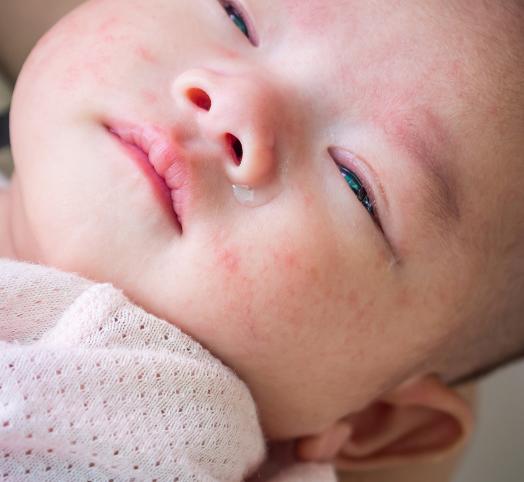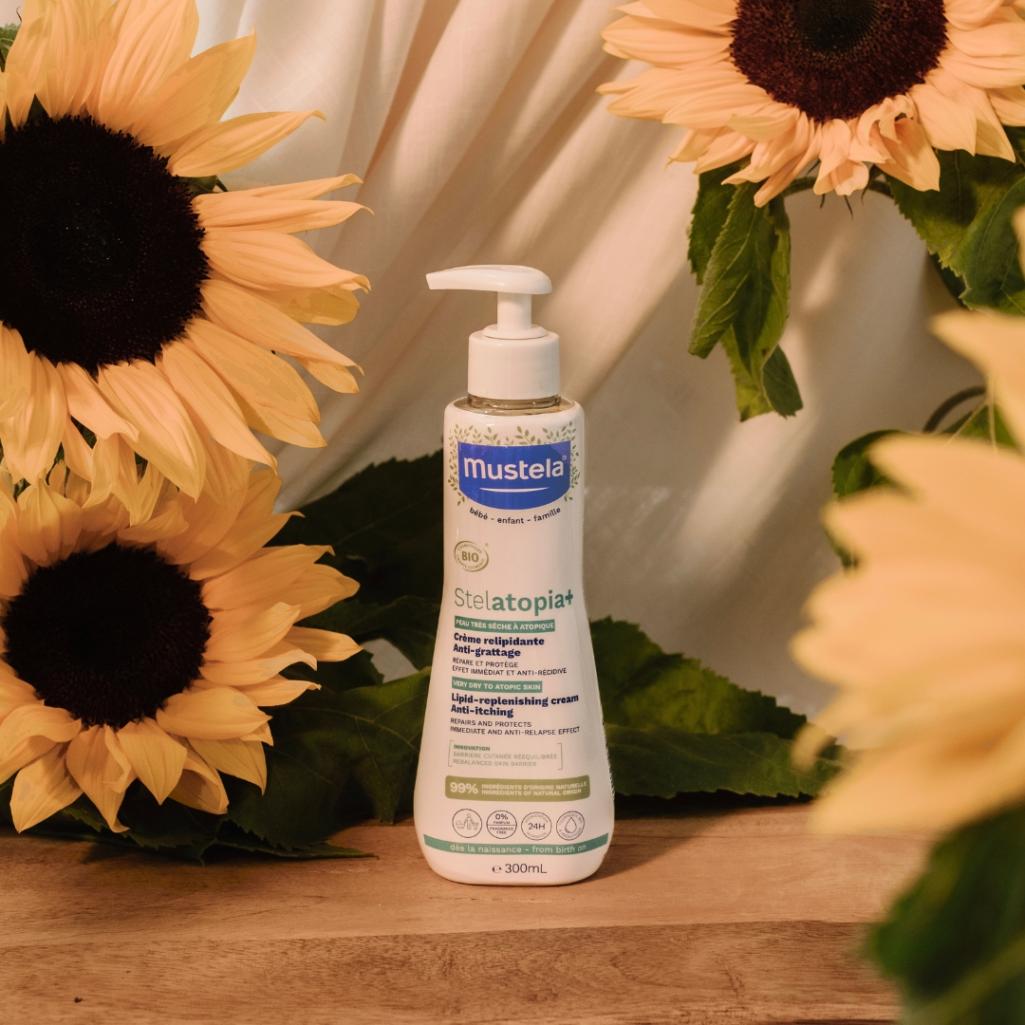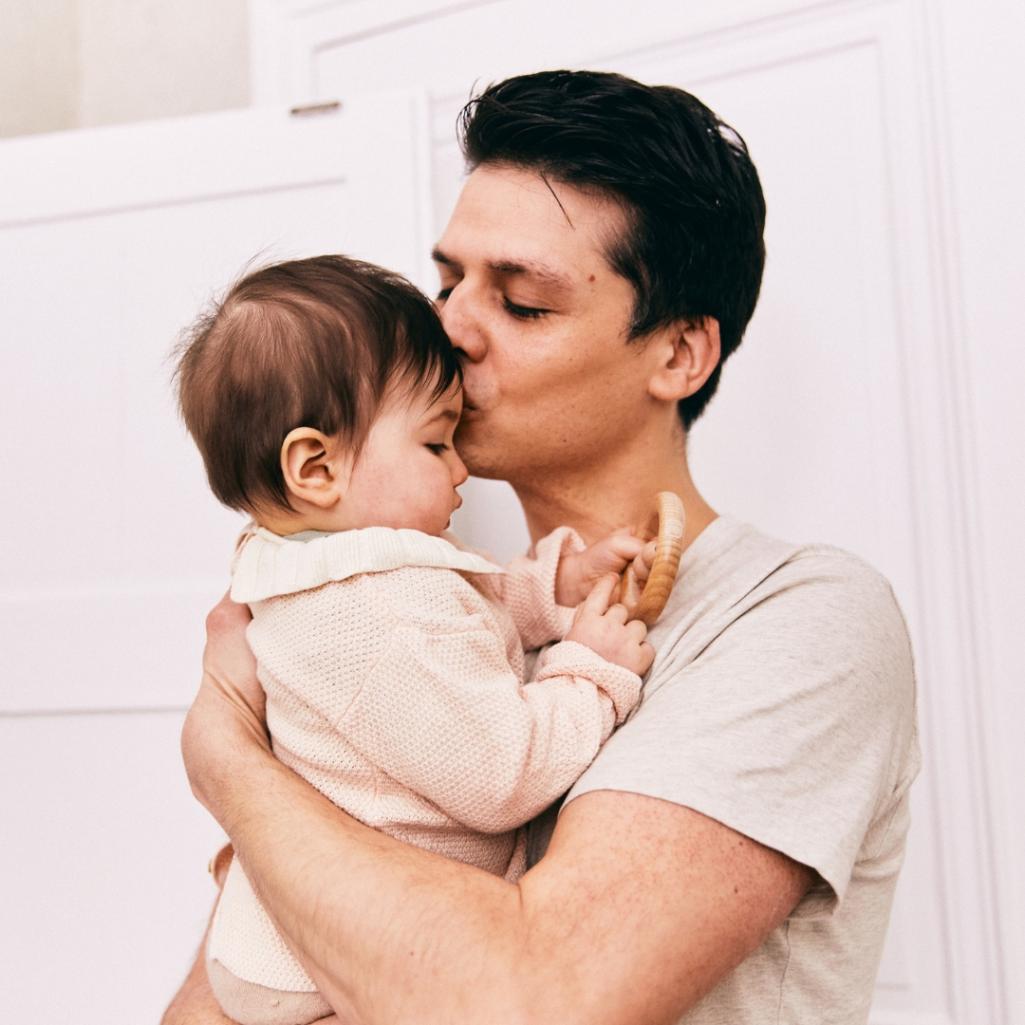How can you improve your baby's sleep during eczema flare-ups?
Updated on March 26, 2024
Created on July 17, 2019
AU & NZ - Find your nearest pharmacy here
Updated on March 26, 2024
Created on July 17, 2019


Using an emollient cream, such as Stelatopia+ Lipid Replenishing Cream, can greatly reduce the discomfort of eczema flares by soothing itching and irritation. 90%* of parents agree it limits the frequency of severe dryness peaks for an improvement of the child's sleep and the family well-being.
We recommend applying a generous amount of emollient cream all over your baby's body before naptime or bedtime. If your baby is fussy during the night, re-applying may help soothe and settle back to sleep. If the condition persists for more than a week, you should consult your paediatrician.
*Clinical study conducted under dermatological and paediatric control on 63 subjects ages 3 months to 8 years with eczema-prone skin, with 1 to 2 application per day during 28 days (self-assessment).
In addition to using an emollient product, adjusting the temperature in your home can greatly reduce eczema flare-ups that disrupt your baby's sleep. Both high temperatures and low humidity can aggravate skin conditions such as eczema. The combination of high temperatures and dry air accelerates moisture evaporation from baby's skin, compromising the hydrolipidic barrier, causing irritation and itching.
Mustela experts recommend maintaining a temperature of around 18°C with humidity above 30% throughout the night, either in your baby's room or throughout the house. This helps your baby's body cool down during sleep, improving sleep quality and minimising eczema. Higher humidity helps retain moisture on baby's skin, reducing the likelihood of irritation during flare-ups.
If you don't have a humidifier, you can increase humidity by placing a bowl of water on a heating fan or hanging a damp towel in the room. Both methods will effectively raise the humidity level, helping to create a more comfortable environment for your baby.

Cuddling with your baby is a great way to help them settle down to fall asleep. It may not directly relieve the discomfort, but it helps them relax. Babies find comfort in being held close to you, feeling safe and secure, and this helps them to relax far more effectively than being left alone in a crib.
If your baby is struggling to sleep because of an eczema flare-up, holding them can work wonders. You can stand and gently bounce them, or choose a soothing rocking motion while sitting in a rocking chair. Babies love these gentle movements, it's one reliable way to help your baby fall

Think about how you feel after a massage - relaxed and calm, right? Your baby will feel the same. A gentle massage will not only distract them from their dry, itchy skin, but will also help them relax and prepare for a peaceful night's sleep.
Start your baby's massage by concentrating on the feet and ankles, using gentle but firm strokes to avoid tickling. As babies are sensitive, use less pressure than you would when massaging an adult. Spend about thirty seconds to a minute on each major muscle group before moving on.
After the feet and ankles, gradually work up the legs, massaging the calves, then the front and back of the thighs. Then move to the hands and wrists before gently massaging the arms to the shoulders. The duration of the massage can be short, five to ten minutes, but adapt to your baby's comfort. A thorough massage can greatly improve their quality of sleep - and yours too.
Eczema can affect any part of the body, but certain areas are more prone to developing red, itchy patches, depending on your baby's age. While applying an emollient cream all over your baby's body is essential, paying extra attention to eczema-prone areas can provide extra relief and help improve sleep quality. Here's a breakdown of where to expect eczema flare-ups depending on your baby's age:
Paying extra attention to these areas and using products such as Stelatopia+ Lipid Replenishing Cream can help your baby's skin repair process. Emollient creams also help to restore the skin's natural protective layer, reducing the frequency of flare-ups and providing a deeper, more restful sleep for both you and your baby. Although eczema is a genetic condition that cannot be completely cured, managing the symptoms (red, swollen, itchy patches) with products from our Stelatopia range can help prevent flare-ups, even in older children, teenagers and adults.